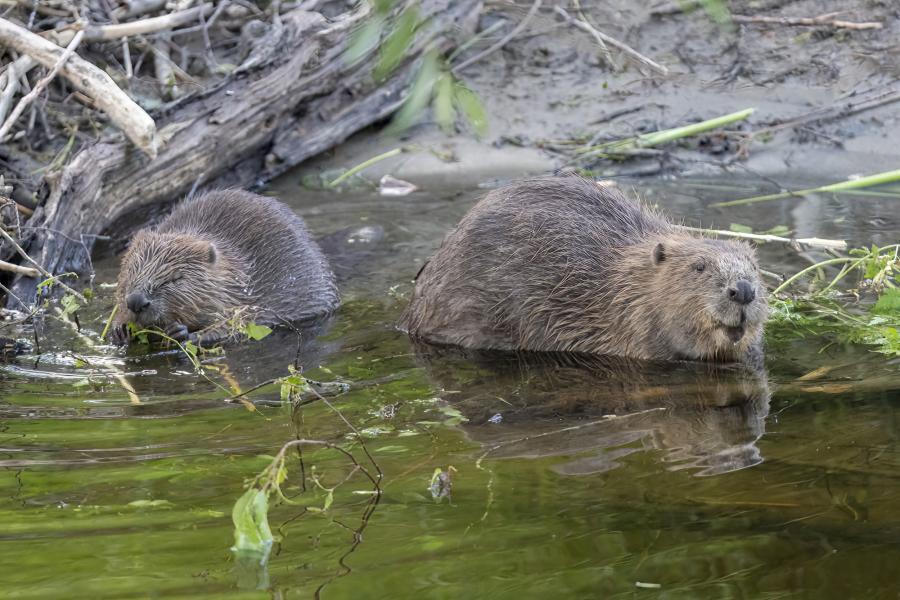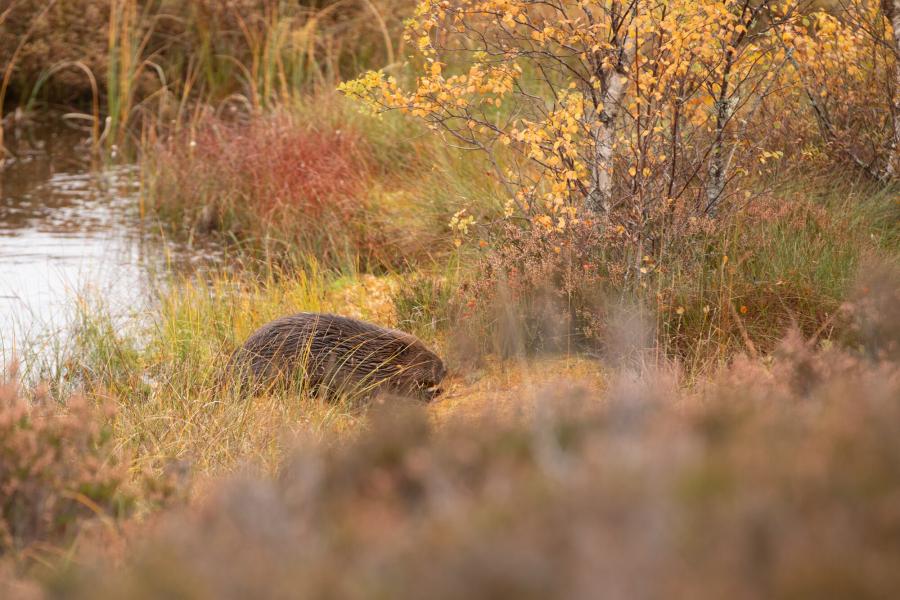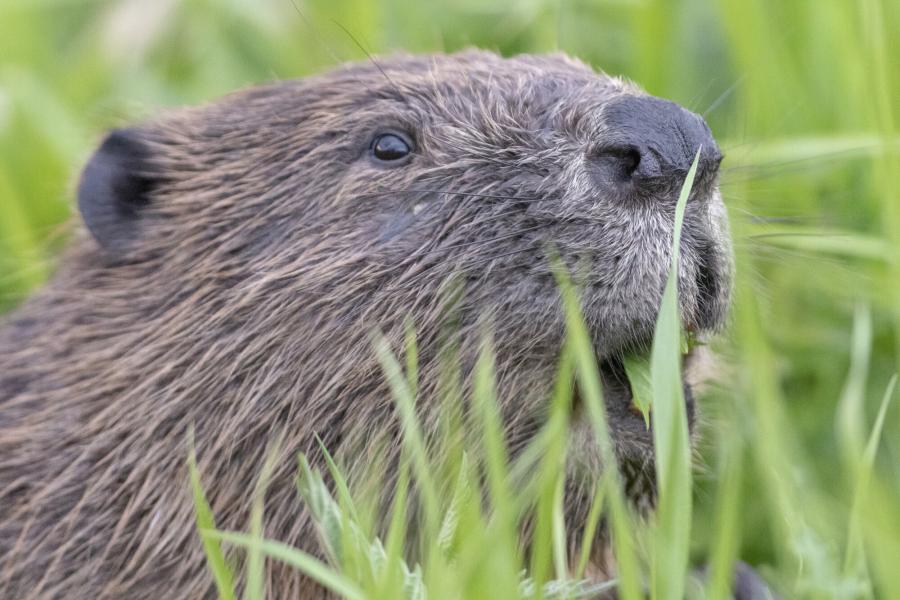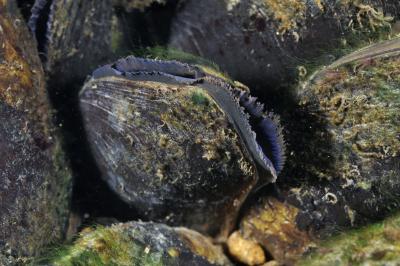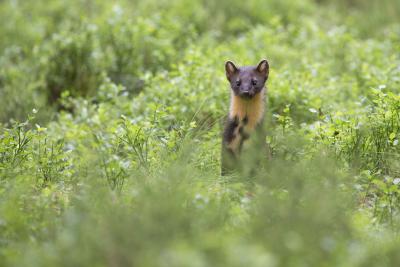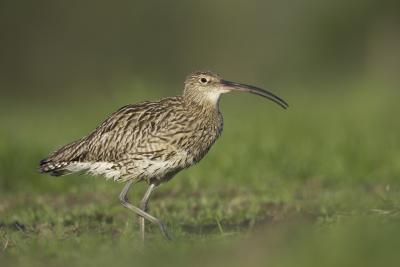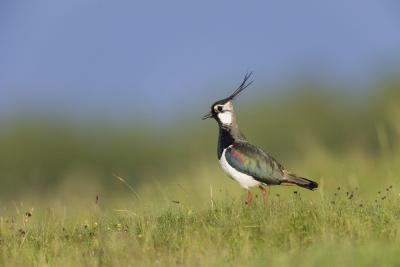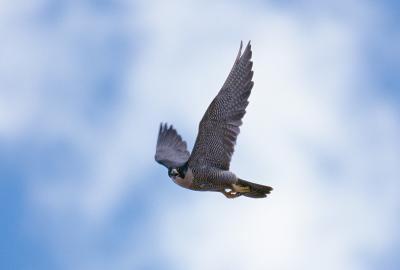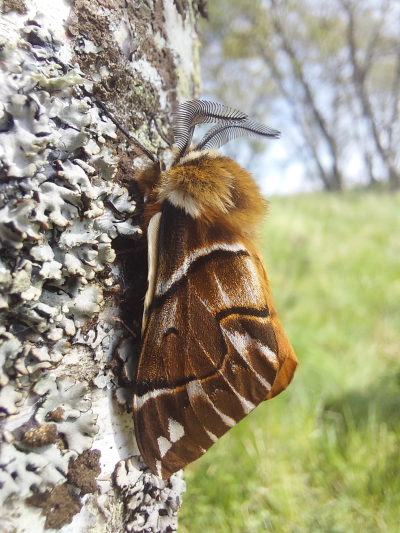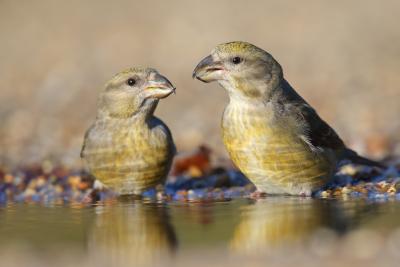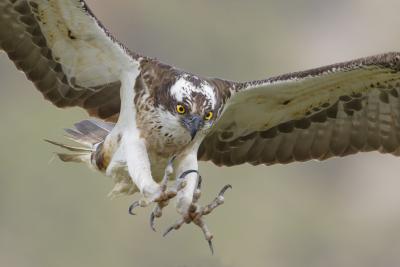Beaver
Castor fiber
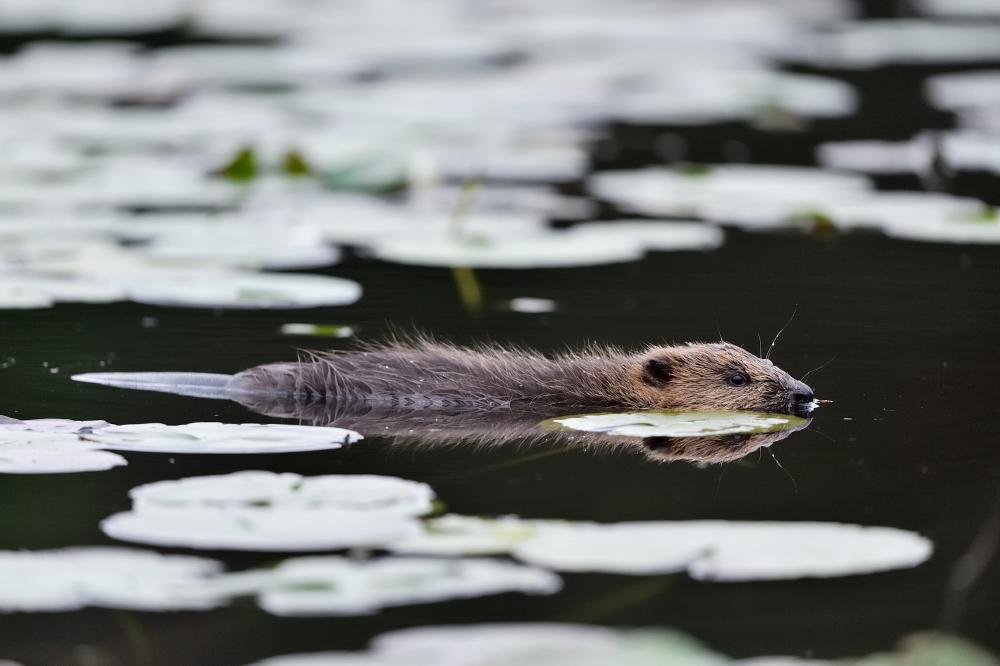
Once hunted to extinction, beavers were reintroduced under licence in 2023 to the Cairngorms National Park. They are the largest rodent that is native to Europe and have thick brown fur, scaly tails and webbed hind-feet.
Factsheet
Weight: 20 - 30kg
Lifespan: Seven - eight years on average
Best time to spot: All year round
Beavers are famous for their large orange teeth, big flat tail and their ability to build dams. As a species they have an ability to change the environment around them, from coppicing trees to damming smaller water courses and creating narrow canals. In doing so, beavers create the ideal habitat for species such as frogs and toads, otters, water voles, dragonflies and birds.
Beavers are herbivores, and so they do not eat meat or fish. They eat leaves, bark, twigs, roots and aquatic plants. Whilst they do fell trees, they do not eat wood - instead, they eat the cellulose underneath the bark and use the wood to build dams and lodges.
Did you know?
Once hunted to extinction, beavers were reintroduced under licence in 2023 to the Cairngorms National Park. They are the largest rodent that is native to Europe and have thick brown fur, scaly tails and webbed hind-feet.
Factsheet
Weight: 20 - 30kg
Lifespan: Seven - eight years on average
Best time to spot: All year round
Beavers are famous for their large orange teeth, big flat tail and their ability to build dams. As a species they have an ability to change the environment around them, from coppicing trees to damming smaller water courses and creating narrow canals. In doing so, beavers create the ideal habitat for species such as frogs and toads, otters, water voles, dragonflies and birds.
Beavers are herbivores, and so they do not eat meat or fish. They eat leaves, bark, twigs, roots and aquatic plants. Whilst they do fell trees, they do not eat wood - instead, they eat the cellulose underneath the bark and use the wood to build dams and lodges.
Did you know?
Their lodges are made out of woody debris, twigs and soil and accessed via water-filled tunnels which keep the beavers safe from predators. Beavers eat, sleep, keep warm and raise their young (kits) in lodges and use them as food stores to keep them going during winter months.
Beavers don’t always live in lodges though, sometimes they create burrows in the banks of rivers. Burrows will usually have one or more entrances below the water’s surface.
Beaver dams are impressive structures made out of wood, mud and stones usually built on shallow rivers, streams and ditches. Building dams helps to protect the beavers from predators, allowing them to move wherever they wish without leaving the water through water filled channels and pools.





